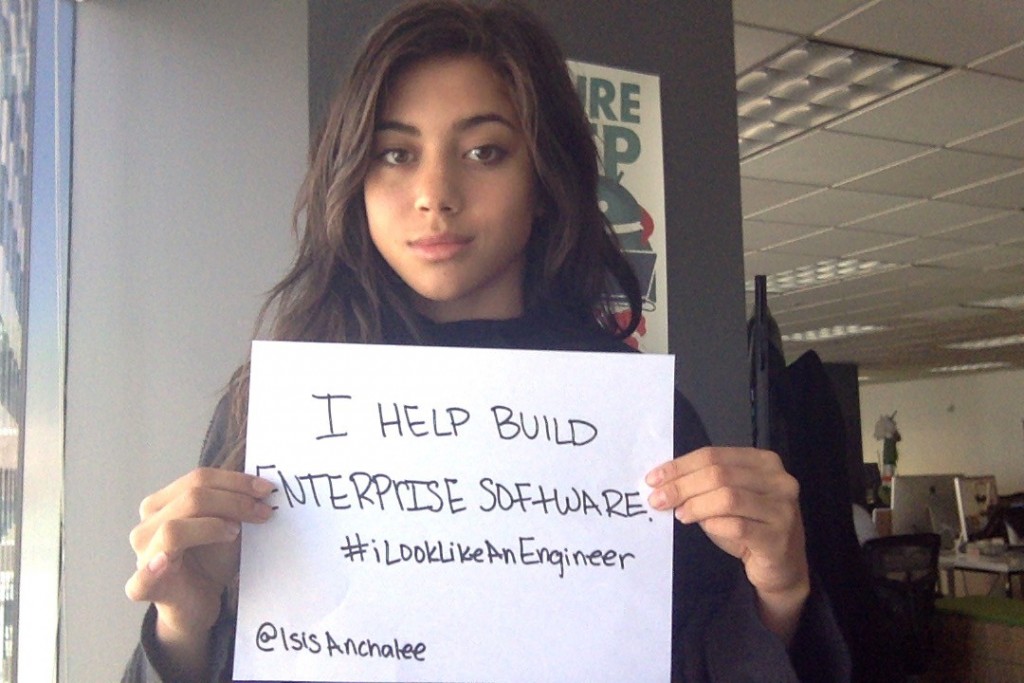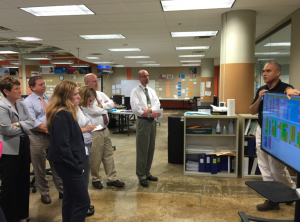One of the latest social media campaigns is raising awareness about engineering fields not being just for men. If you haven’t seen it, let me explain. A 22 year old woman, Isis Anchalee, was part of an ad campaign for her San Francisco based company, OneLogin.

Isis Anchalee started #ILookLikeAnEngineer in response to social media commenters that claimed she did not look the part.
Some people did not believe she was an engineer when they saw the ads. And so the negative and sexist comments began. Ms. Anchalee chose the high road and started a social media campaign with hashtag #ILookLikeAnEngineer. Within hours, tens of thousands of women in engineering jobs had posted their own picture with the hashtag.
With the very divisive language currently dominating the presidential campaign including negative comments aimed at women, what should we as leaders be doing? As always, we should be promoting diversity, common decency, and respectfulness in all our language, behaviors, and practices. We should expect nothing less from each other as people. Continue reading





 It is a weekly discipline. But knowing that the content is appreciated and has an impact keeps me going. Writing has also been a great method of reflection for me –
It is a weekly discipline. But knowing that the content is appreciated and has an impact keeps me going. Writing has also been a great method of reflection for me – 
 Creating sustainable Health Information Exchanges (HIE), not to be confused with a Health Insurance Exchange, is what we are all focused on now. The Office of the National Coordinator for Health IT (ONC) published “Connecting Health and Care for the Nation: A Shared Nationwide Interoperability Roadmap” for public comments earlier this year. There has been progress over the years but we still have a long ways to go.
Creating sustainable Health Information Exchanges (HIE), not to be confused with a Health Insurance Exchange, is what we are all focused on now. The Office of the National Coordinator for Health IT (ONC) published “Connecting Health and Care for the Nation: A Shared Nationwide Interoperability Roadmap” for public comments earlier this year. There has been progress over the years but we still have a long ways to go. more women to go into the field. I recently did a fireside chat with Kate Catlin, the organizer of Women Rising, and about 30 young women in downtown Detroit. It was the first in a new UpRising series where they invite in “high-powered women in technology” they want to learn from.
more women to go into the field. I recently did a fireside chat with Kate Catlin, the organizer of Women Rising, and about 30 young women in downtown Detroit. It was the first in a new UpRising series where they invite in “high-powered women in technology” they want to learn from. But, twenty minutes into the flight, the pilot told us there were problems with the landing gear; the safest thing to do was to return to the Boston airport. He told us he’d know more after we landed. Problems with the landing gear but we were going to land OK? Of course the next half hour was one of the longest ever. We did land safely, de-boarded and waited for news of when we’d depart.
But, twenty minutes into the flight, the pilot told us there were problems with the landing gear; the safest thing to do was to return to the Boston airport. He told us he’d know more after we landed. Problems with the landing gear but we were going to land OK? Of course the next half hour was one of the longest ever. We did land safely, de-boarded and waited for news of when we’d depart.